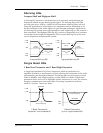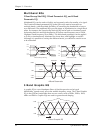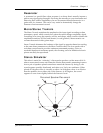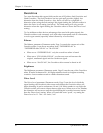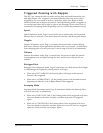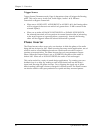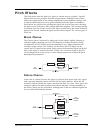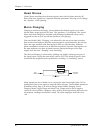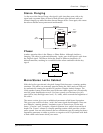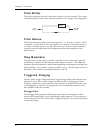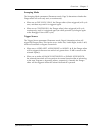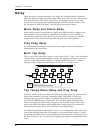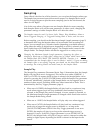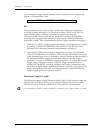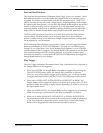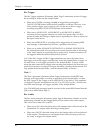
Overview - Chapter 3
Q20 Reference Manual 41
Stereo Flanging
In the case of the Stereo Flange, the signal is split into three parts with a dry
signal and a separate Delay section for both left and right channels with one
channel flanging up while the other channel flanges down. Once again, this causes
the effect to become more pronounced and dramatic.
LFO
DELAY
DRY
SIGNAL
RIGHT
FLANGED
OUTPUT
FEEDBACK
DELAY
FEEDBACK
DRY SIGNAL
DRY SIGNAL
LEFT
FLANGED
OUTPUT
Phasor
Another popular effect is the Phasor or Phase Shifter. Although similar to
flanging , this effect is produced differently. Again, part of the signal is split from
the original signal. The Phasor shifts the phase of different frequencies in
different amounts, resulting in a comb filter effect when combined with the dry
signal.
DRY
SIGNAL
DRY SIGNAL
PHASED
OUTPUT
LFO
PHASOR
Mono/Stereo Lezlie Cabinet
With the Lezlie type selected, the pitch change Block becomes a rotating speaker
simulator. This effect was extremely popular during the 1960Õs and was achieved
by mechanically rotating the speakers to produce complex timbral changes. The
Lezlie speaker system is most often used with tone wheel organs, but is occasionally
used for guitar amplification as well. You have control over the motor (on/off),
speed (slow/fast) and high rotor level (-12/+6dB), which controls the brightness of
the effect.
The stereo version gives you an additional parameter called Stereo Separation.
This gives you control over how ÒwideÓ the stereo signal should appear. There are
two different Òrotating speakerÓ simulation types to choose from, circular and
linear. ÒCircularÓ uses a complex, elliptical equation for a realistic forward/back
depth. The ÒLinearÓ scheme is a simpler panning routine which provides a wider
stereo spread. You can select between the two simulation types by setting the Stereo
Separation parameter to either a positive or negative value. Experiment with both
to find which works better which your music.



